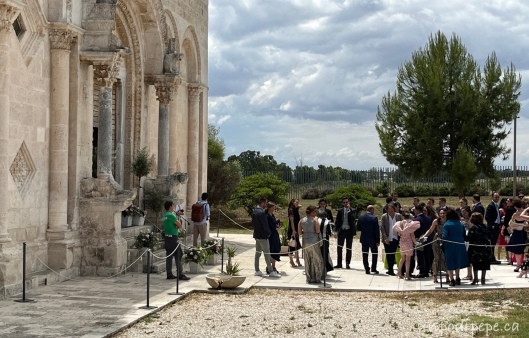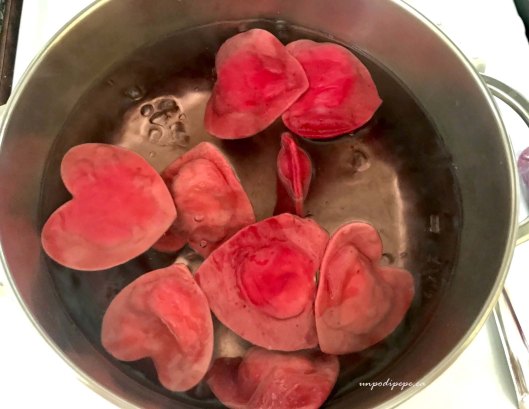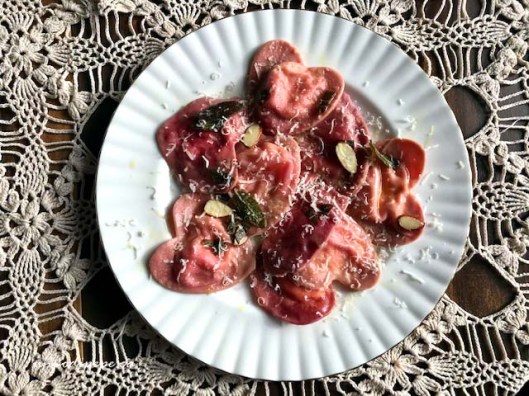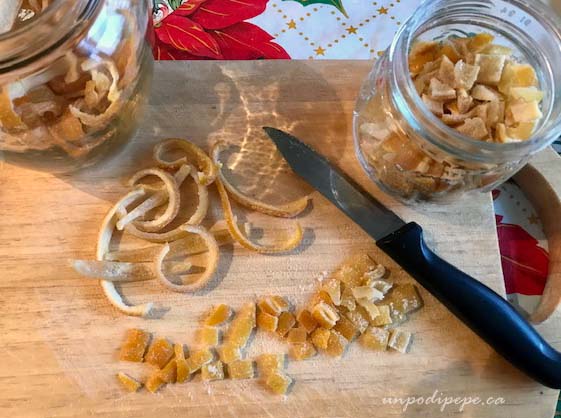Tags
Eurovision, Festival di Sanremo, Italian song contest, Liguria, Musica Italiana, Sanremo viewing guide
 The 74th edition of Festa della Canzone Italiana di Sanremo is February 6-10, 2024, broadcast live on RAI. Once again this year, I have put together a viewing guide to the annual 5 day song competition held in the town of Sanremo, Liguria. The Festival di Sanremo is the world’s longest running national televised music competition.
The 74th edition of Festa della Canzone Italiana di Sanremo is February 6-10, 2024, broadcast live on RAI. Once again this year, I have put together a viewing guide to the annual 5 day song competition held in the town of Sanremo, Liguria. The Festival di Sanremo is the world’s longest running national televised music competition.
In 1950. Piero Bussetti of the Sanremo Casino and Giulio Razzi, conductor of the RAI orchestra launched a competition for previously unreleased songs to boost the local economy. The first edition was broadcast live on RAI radio in January 1951 with 3 artists performing 20 songs. Since 1955 it is broadcast live on television.
From 1951-1977 the festival was held at the Sanremo Casino. Since 1977 it has been at the iconic Teatro Ariston. The Festival is a massive media event in Italia and has launched many careers, including Domenico Modugno, Zucchero, Mina, Andrea Bocelli, Il Volo, Giorgia, Laura Pausini, Eros Ramazzotti, Mahmood and most recently Måneskin. I love to watch Sanremo every year with Mamma!
The winner has the first option to represent Italia at the 68th annual Eurovision Song Contest in Malmö, Sweden May 7, 9 and 11, 2024. Eurovision is huge in Europe with 39 countries participating, but hardly known at all in North America. 2021 Sanremo winners, Måneskin won Eurovision with their brilliant song ‘Zitti e Buoni’. As the reigning country, Italia hosted Eurovision 2022 in Torino.
The 74th edition of the Festival di Sanremo February 6-10, 2024 will be broadcast live on RAI (RAI International for the rest of us) and the RAIplay App, hosted for the fifth time by Amedeus, with a different cohost each night. They are Marco Mengoni (2023 winner), Giorgia, Teresa Manneno, Lorella Cuccarini and comedian Fiorello. Former winners, Italian and international guest artists will perform.
Special guests, on Feb 6th, cohost Marco Mengoni will perform. Feb 7th special guests are Giovanni Allevi, and Giorgia, who celebrates the 30th anniversary of ‘E poi‘. Feb 8th, Russell Crowe will perform with his band, Indoor Garden Party, and Eros Ramazzotti celebrates the 40th anniversary of ‘Terra Promessa’. Finally on Feb 10th, Italian ballet dancer Roberto Bollè performs and Gigliola Cinquetti celebrates 60 years of ‘Non ho l’età’.
The Sanremo prize goes to the winning song, although in most cases the performers are involved in the songwriting. This year, there are 30 contestants, including the top 3 winners from the junior contest, ‘Sanremo Giovani’. Judging is complex and contestants perform with the full RAI orchestra-complete with maestro.
A summary of what happens each night:
Night #1 February 6th. All 30 contestants perform, with no eliminations. Voting is 100% by press jury-(accredited journalists from press comprising of print, TV and web).
Night #2 and #3 February 7th and 8th. 15 of the contestants perform each night and there are no eliminations. The contestants will be introduced by one of the artists not performing that night. Voting is 50% televote and 50% radio jury.
Night #4 February 9 is ‘Covers night’. Each artist/group performs a cover song of their choice. They can perform solo or invite an Italian or international artist as a guest. Voting is 34% televote, 33% press jury and 33% radio jury.
Final night #5 February 10th. There are 2 rounds the final night. All 30 acts perform and voting is 100% from televote. The top 5 are announced, then voting is reset and there is a new, final vote. The winner is decided by 34% televoting, 33% press jury and 33% radio jury.
 The lineup of concorrenti /contestants includes 6 former Sanremo winners, 1 two-time winner, 5 who have represented Italia at Eurovision, many former contestants, and some first time acts. Below is a list of all 30 performers, the song titles and a few other details to help you watch and enjoy the festival:
The lineup of concorrenti /contestants includes 6 former Sanremo winners, 1 two-time winner, 5 who have represented Italia at Eurovision, many former contestants, and some first time acts. Below is a list of all 30 performers, the song titles and a few other details to help you watch and enjoy the festival:
- Alfa –‘Vai’. This is Genovese rapper Andrea De Filippi’s first time at Sanremo. He released his debut mix tape in 2017 and collaborated with Rosa Chemical on ‘Snob’ in 2021.
- Alessandra Amoroso –‘Fino a qui’. Alessandra is the 2009 winner of the talent show ‘Amici’. She has received 2 MTV awards and 2 MTV Europe music awards. In 2017 she sold out L’arena di Verona for 2 nights. This is her first time at Sanremo.
- Angelina Mango –‘La Noia‘. Angelina had an amazing 2023. She won the talent show Amici and released an EP ‘Voglia di Vivere‘. ‘Ci Pensiamo Domani’ went triple platinum. This is her first time at Sanremo, with a song co-written by Madame.
- Annalisa –‘Sinceramente’. Annalisa placed 2nd in the 2010 edition of Amici. She has collaborated with many Italian artists and has 31 platinum and 14 gold records. Her 2023 song Disco Paradise with Fedez and Articolo 31 went triple platinum. This is her 6th time at Sanremo since 2013. In 2018 she came in 3rd place. Fun fact: her 2016 song ‘Used to You/Potrei abituarmi’ was written by Dua Lipa!!!
- Big Mama -‘La Rabba non ti Basta‘. Avellino native Marianna Mammone promotes body positivity and anti bullying. In 2022 she was chosen as one of 10 up and coming Italian artists by the streaming platform RADAR. In 2023 she was a guest on covers night, singing ‘American Woman’ with Elodie. This is her first time competing at Sanremo.
- Bnkr44 –‘Governo Punk’. Bnkr44 was formed in 2019 by 7 young men from Villanova, near Firenze. They are Erin, Piccolo, Faster, JxN, Caph, Fares, and their artistic director ghenayO. Their music is urban pop/nuovo pop Italiano. In 2023 they appeared on Covers night, duetting with Sethu on ‘Charlie fa surf RMX’. They have collaborated with several Italian artists, including Madame, Ghali, Rkomi, Elisa and Tananai. Bnkr44 placed in the top 3 of Sanremo Giovani.
- Clara -‘Diamanti grezzi‘. Clara Socini aka Clara or Crazy J. She is the winner of Sanremo Giovani, the first female to win in 14 years! Clara has released 4 singles since 2020. In 2023, she played the role of Giulia on the RAI series Mare Fiori 3 and her collaboration with Mr Rain on ‘Un Millione di Notte‘ made the top 10.
- Dargen D’Amico -‘Onda Alta‘. Milanese rapper and producer Jacopo D’Amico wrote 2 songs for Sanremo 2021. In 2022 ‘Dove is Balla‘ came in 9th place and went on to be platinum. Dargen was a judge on XFactor Italia 2022 and 2023. This is his 2nd time competing.
- Diodato -‘Ti muovi‘. Diodato is the winner of Sanremo 2020 with ‘Fai Rumore‘. He also participated in 2014 and 2018. He was to represent Italia at Eurovision 2020 but it was cancelled due to the pandemic. He performed as a guest at Eurovision 2022 in Torino. Diodato has a docuseries on RAIplay.
- Emma –‘Apnea’. Emmanuela Marrone is the 2012 Sanremo winner with ‘Non è l’inferno’. She won the talent show Amici in 2010 and in 2011 came in 2nd place with Modá at Sanremo. She also cohosted in 2015. Emma was invited to represent Italia at Eurovision 2014 with ‘La Mia Cittá‘. In 2018 she performed onstage with U2 during their Italia tour! Emma was a Sanremo super guest in 2020 and an Amici and XFactor judge in 2020/21. She came in 6th place in 2022 and in 2023 was a guest on covers night with Lazza. Emma’s docufilm is on Prime Video.
- Fiorella Mannoia -‘Mariposa‘. Fiorella has collaborated with many Italian artists, including Lucio Dalla, Pino Daniele, Loredana Bertè and Giuliano Sangiorgi. Her musical debut was in 1968. She participated in Sanremo 1981, 1984 and 1987, when she won the Critics Prize with ‘Quello che le Donne non Dicono‘. In 2000 Fiorella appeared as a Superguest. In 2017 she participated with the song ‘Che sia Benedetta’ and placed 2nd.
- Fred DePalma -‘Il Cielo non ci Vuole‘. Federico Palana discovered hip hop in 2008. He has had 28 platinum records and 6 gold. Fred has 4 million monthly streams on Spotify and has collaborated with several international artists, including 3 with Ana Mena. This is his first time participating at Sanremo.
- Gazelle –‘Tutto qui’. A first time participant at Sanremo, Gazelle has released 4 albums, with over a billion streams and his concert tour included the Stadio Olimpico Roma in June 2023.
- Geolier -‘I p’me, tu p’te’. Napoletano rapper Emanuele Palumbo had the 2023 bestselling album in Italia with ‘Il Coraggio dei Bambini‘. This is his first time at Sanremo.
- Ghali -‘Casa Mia’. Ghali Amdouni is a Milanese rapper. His first album ‘Album‘ was the 5th highest selling in Italia in 2017. He collaborated with Ed Sheeran in 2020 on a remake of Antisocial and also appeared as a super guest at Sanremo with a medley of his hits. In 2021 he also created a new capsule Collection for Benetton. This is Ghali’s first time competing at Sanremo.
- Il Tre –‘Fragili’. Roman hip hop artist Guido Senai. Il Tre’s career started in 2016 when he won the show ‘One shot game’. This is his first time at Sanremo
- Il Volo -‘Capolavoro‘. Piero Barone, Ignazio Boschetto and Gianluca Ginoble, 2 tenors and a baritone, won the children’s talent show ‘Ti lascia una canzone‘ in 2009 and have since had an incredible international career. This is their 3rd time participating at Sanremo. In 2015 they won with ‘Grande Amore‘ and in 2019 placed 3rd with ‘Musica che Resta‘. Il Volo represented Italia at Eurovision 2015 in Vienna and placed 3rd..
- Irama -‘Tu no’. This is Irama’s 5th time competing at Sanremo. In 2016 he was in the Newcomers category and his 2019 song went double platinum. His 2020 song ‘Mediterranea‘ was the most listened to song of the summer. Irama was not able to perform live in 2021 due one of his staff testing COVID positive, although he still placed 5th based on his pre-recorded rehearsal performance! His ballad ‘Ovunque Sarai’ dedicated to his recently deceased nonna was my favourite to win in 2022. It placed 4th. Irama has several recent collaborations with Rkomi, including the game show Celebrity Hunted.
- La Sad -‘Autodistruttivo’.TheΦ, Plant and Fiks, 3 solo rap, metalcore, and emo punk artists got together to form La Sad. They released their first album in 2022, and in 2023 premiered their single ‘Toxic‘ on TV. They spent the summer touring Italia on the Summersad Tour. This is their first time at Sanremo
- Loredana Bertè -‘Pazza‘. Loredana can be recognized by her short skirts and long blue hair. Her first LP in 1974 ‘Streaking‘ was censored at the time! After seeing Bob Marley live in Jamaica in 1979, she released the first reggae music in Italian ‘È la Luna Bassò’. Loredana’s 1982 album ‘Traslocando‘ is #24 on the Rolling Stone Italia list of 100 best Italian albums ever. She has competed at Sanremo 11 times and in 2008, was presented the city of Sanremo career prize. In 2019 her song ‘Cosa ti Aspetta da me‘ placed 4th, which caused a minor outrage among fans. In 2015, she released her autobiography ‘Traslocando, è andata così’. Since 2015, Loredana has been an Amici judge various times and since 2020 a coach on The Voice Senior and The Voice Kids. In 2022 on Covers night, she performed her 1975 hit ‘Sei Bellissima‘ with Achille Lauro.
- Mahmood -‘Tuta gold’. Mahmood (Alessandro Mahmoud) won Sanremo Giovani in 2018, which got him a spot in the 2019 competition. He is the 2019 Sanremo winner and 2ndplace Eurovision winner with the catchy ‘Soldi’. He also received the Eurovision prize for best musical composition. Mahmood also won Sanremo in 2022 with Blanco with ‘Brividi‘. I believe this is the only love ballad performed by 2 men. They placed 6 at Eurovision in Torino. In 2023 Mahmood was a special guest the final night of the Eurovision Festival in Liverpool. He was a guest performer at Sanremo 2020 and 2021 and has written songs for Elodie, Michele Bravi, Marco Mengoni and others. He starts his European tour in April 2024. Fun fact: Mahmood voices Sebastian in the Italian version of the live action ‘La Sirenetta/The Little Mermaid’!
- Maninni -‘Spettacolare’. Alessio Mininni released several singles in 2022 and 2023. He opened for The Kolors on various dates of their tour. This is Maninni’s first time at Sanremo.
- Mister Rain -‘Due Altalene’. Rapper and ex Amici participant Mattia Balardi from Brescia, known as ‘Mr Rain’ has been performing since 2014. At Sanremo 2023 Mr Rain placed 3rd with ‘Supereroi‘, which he performed harmonizing with 8 talented bambini. He also released a platinum single with Sangiovanni ‘La Fina del Mondo‘.
- Negramaro –‘Recominciamo Tutto’. Negramaro, made up of Giuliano Sangiorgi, Emanuele Spedicato, Ermanno Carta, Danilo Tasco, Andrea Manasco and Andrea DeRocco are one of my favourite bands- and not just because they are Pugliesi! In 2001 they were finalists in MTV’s new talent contest. They released their first album in 2003. In 2005 the album ‘Mentre tutto Scorre‘ put them on the map. They competed at the Festival Sanremo with the title song and received the Sala Stampa radio and TV critics award. They also received an MTV Europe award. Negramaro has collaborated with everyone in Italian music and also international acts, including the beautiful duet ‘Senza Fiato’ with the late Dolores O’Riordan. Negramaro was the first Italian band on the cover of Billboard Magazine. They were Sanremo superguests in 2018 and in 2019 released a docufilm on the occasion of their 20 years together. In 2022 they had a 40 date Unplugged European Tour. 19 years later, they are back competing at Sanremo for the 2nd time.
- Renga e Nek -‘Pazzo di te’. Francesco Renga and Filippo Neviani aka Nek have each been in the Italian music industry for over 35 years. Francesco is the 2005 Sanremo winner with ‘Angelo’ and this is his 8th time in the competition. Last year he and Nek were guest performers and they released an album together ‘Renganek’. This is Nek’s 5th time competing at Sanremo. In 2015 he placed 2nd with ‘Fatti Avanti Amore’ and also won the prize for best arrangement. In 2017 he was the Italian artist most played on radio, with 4 singles.
- Ricchi e Poveri -‘Ma non Tutta la vita’. Originally formed in 1968 as a quartet Franco Gatti, Angela Brambati, Marina Occhiena and Angelo Sotgiu. In their 1970 Sanremo debut, they came in 2nd place with ‘La Prima Cosa Bella‘ together with Nicola di Bari. They also came in 2nd place in 1971 with ‘Che Sarà’. In 1978 they represented Italia at Eurovision. In 1981 they came in 5th with ‘Sará Perché ti Amo‘ and Marina left the group. They won Sanremo 1985 with ‘Se m’Innamoro’. In 2013, they received the Premio della carriera Città di Sanremo and in 2016 Franco also left the group. To celebrate half a century of Ricchi e Poveri, they held a concert at the Teatro di Torino in 2018. In 2020 their manager reunited the 4 and they were superguests at Sanremo. Franco passed away in 2022. This will be their 13th time competing at the Festival Sanremo.
- Rose Villain -‘Click boom!’. This is Goth singer/rapper Rosa Luini’s first time competing at Sanremo. Last year she performed on Covers night with Rosa Chemical. She also released her first album ‘Radio Gotham‘ and ‘Fragile‘ a single with Achille Lauro. Her new hit ‘Io, me e altri guai‘ is described as ‘Tainted love meets Wednesday Addams’. Rose will be performing with Italian legend Gianna Nannini for Covers night!
- Sangiovanni –‘Finiscimi’. Since his Sanremo debut in 2022, the 20 year old has had great success. His song ‘Malibu’ had the most listens on Spotify Italy in 2021. For Covers night, he will perform ‘Mariposas‘, the Spanish version of his hit ‘Farfalle’ with Spanish singer Aitana.
- Santi Francesi -‘L’amore in Bocca‘. Santi Francesi is made up of 2022 XFactor winners Alessandro DeSantis and Mario Francese-see what they did with their name?. They released their first album in 2019 and opened for Madame and Blanco at the Ferrara Summer Festival. This is their first time at Sanremo.
- The Kolors -‘Un Ragazzo, una Ragazza’. Formed in Milano in 2009 by cugini Antonio ‘Stash’ and Alex Fiordispino and Dario Iaculli with a distinct 80’s funk vibe. They were the resident band in the club ‘Le Scimmie’ and won the Amici talent show in 2015. The Kolors made their Sanremo debut in 2018 with their first song in Italian ‘Frida (Mai, mai, mai)’. They have done many collaborations and Stash has been an Amici judge. Their 2023 hit ‘Italdisco‘ was the tormentone** of the summer!
*Amici is an Italian talent show on television since 2001. 20 ‘students’ aged 16-30 years, interested in being professional singers, songwriters and dancers participate. **Un tormentone is a catchy song that you can’t get out of your head, like an ‘ear worm‘!
Read the contestants’ full bios on the Festival di Sanremo website. RAI International usually airs the shows twice-once live at 1900 -0100ish Italian time, and a replay later. Check the local listings for your country. The RaiPlay app is another way to watch -and it will not be Geoblocked!
 Will you be watching the Festival di Sanremo? Let me know which performances you are looking forward to or which ones were your favourites!
Will you be watching the Festival di Sanremo? Let me know which performances you are looking forward to or which ones were your favourites!
Ciao, Cristina














 The look on Antonio’s face when he sees Federica at the altar is priceless.
The look on Antonio’s face when he sees Federica at the altar is priceless. 




























































 Doubling the dose is not a great idea since you need to work fast. If you make 2-4 doses in a row like I do, you can prepare everything in advance. I measure all the spices for each dose in a little jar so they are ready to add in, toast the nuts in advance, and have a separate bowl for each dose so I can work quickly. I also have the wafer paper cut in advance and the tart pans ready on a baking sheet.
Doubling the dose is not a great idea since you need to work fast. If you make 2-4 doses in a row like I do, you can prepare everything in advance. I measure all the spices for each dose in a little jar so they are ready to add in, toast the nuts in advance, and have a separate bowl for each dose so I can work quickly. I also have the wafer paper cut in advance and the tart pans ready on a baking sheet.